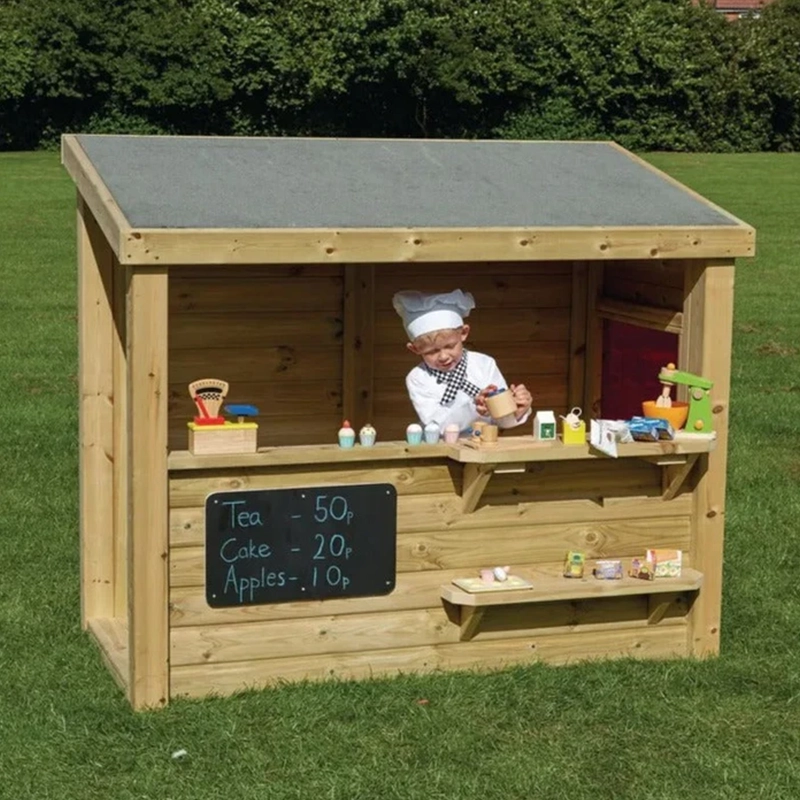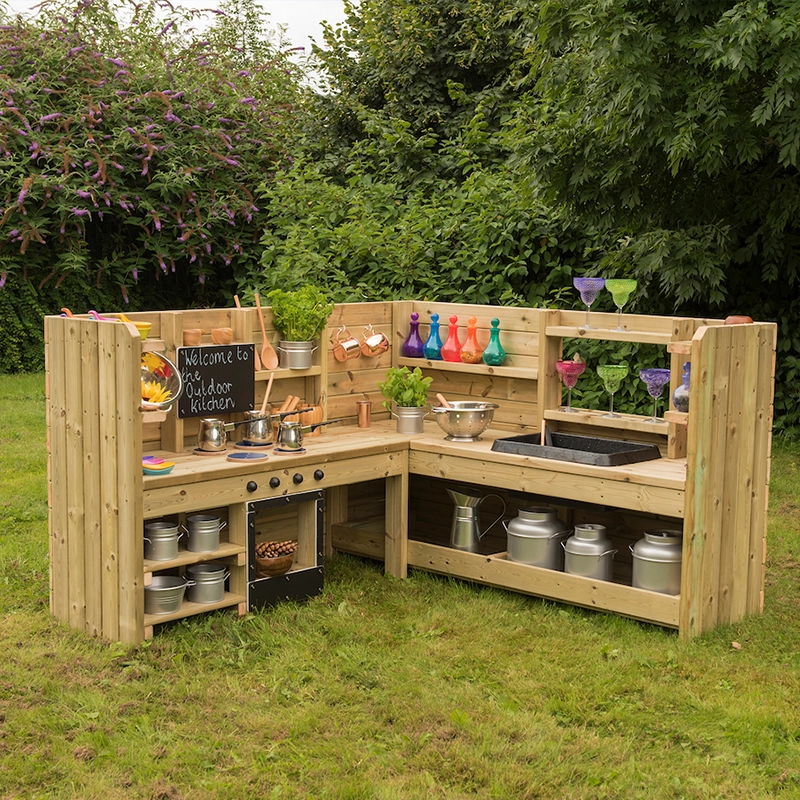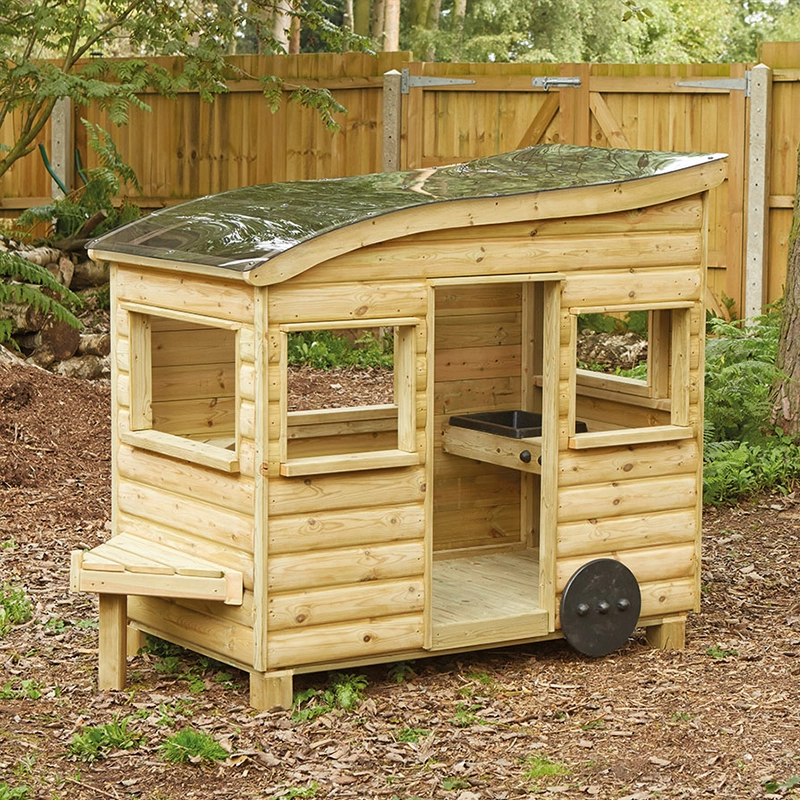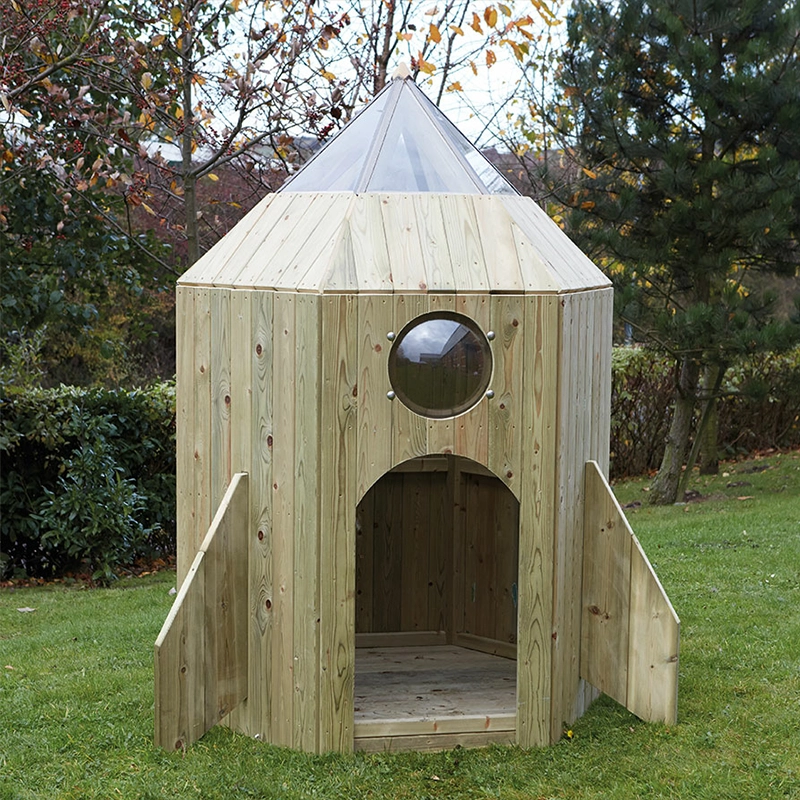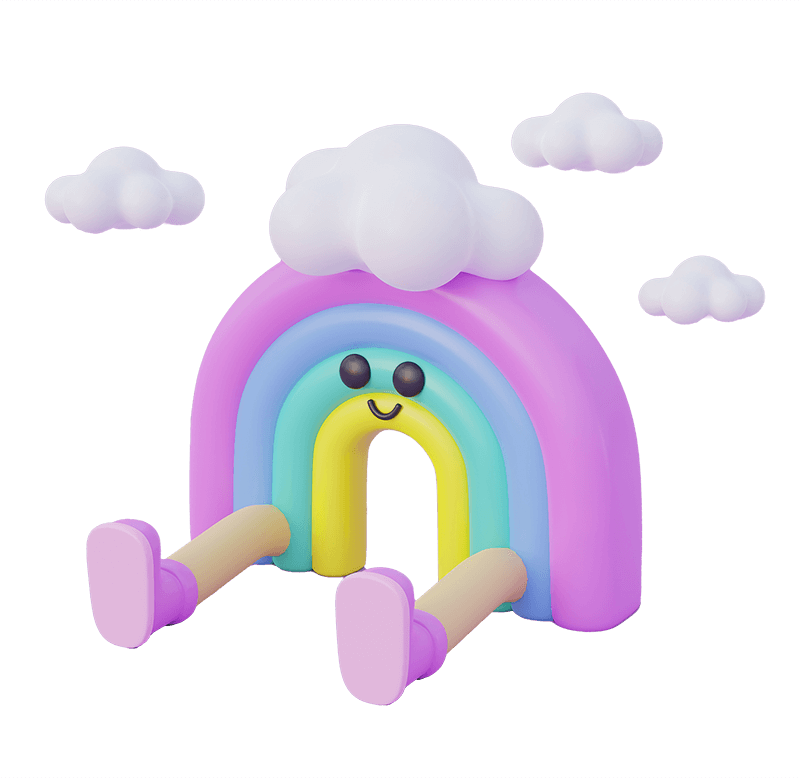
Xiha Toy
Outdoor Role Play Area
Welcome to our outdoor role-play area, where children’s creativity and social skills flourish. Our playrooms, market stalls, and themed structures create endless opportunities for imaginative play. The inclusive design is suitable for children of all abilities and promotes social interaction and cooperative play.
Elevate your outdoor space with our innovative play solutions to inspire and educate. Turn your playground into a world of adventure!
Introducing Our Premier Outdoor Role Play Area
Xiha Toy's outdoor role-play areas help improve children's motor skills and overall health and promote basic social skills for interacting and collaborating in role-play scenarios. Perfect for schools and parks, our outdoor role-play areas can be customized to fit different spaces and needs, enhancing any outdoor environment while providing an exciting playground.
Xiha Toy:Leading Manufacturer and Supplier of Preschool Furniture
Xiha Toys’ 20 years of dedicated service in early childhood education has made us a significant supplier of nursery furniture. We specialize in outdoor playground furniture and are committed to creating safe and stimulating environments.
Our expertise is trusted by more than 2,000 kindergartens worldwide, each benefiting from our customized solutions. Our products are carefully designed to withstand the elements from outdoor sports to outdoor role-play areas.
We offer a seamless one-stop shop – from the initial design, tailored to your specific needs, to the final delivery and installation of your furniture. We ensure that each piece of furniture meets the highest safety standards and enriches a child’s educational experience.
We believe the right outdoor furniture can turn any play area into a haven of adventure and learning. Partner with Xiha Toy and let us help you create outdoor play areas for young children that are both safe and engaging.
For an Outdoor Role Play Area, the materials used are chosen for their durability, safety, and ability to stimulate imaginative play. Here's a breakdown of commonly used materials in these areas:
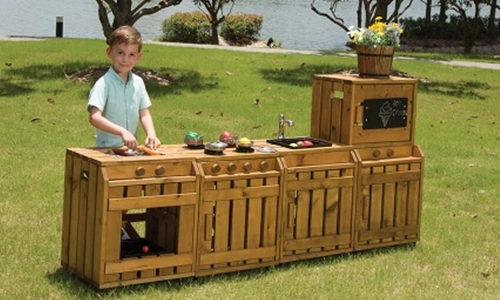
Wood
Often used for playhouses, outdoor kitchens, market stalls, and climbing frames due to its durability and natural aesthetic.

Plastic
Commonly used for sandboxes, water tables, and some role-playing costumes for its lightweight and weather-resistant properties.

Fabric
Used for role-playing costumes and sometimes for shading elements in play areas.
What Are the Key Elements of Creating an Outdoor Role Play Area?

Play Structures

Interactive Stations

Sensory Play Areas
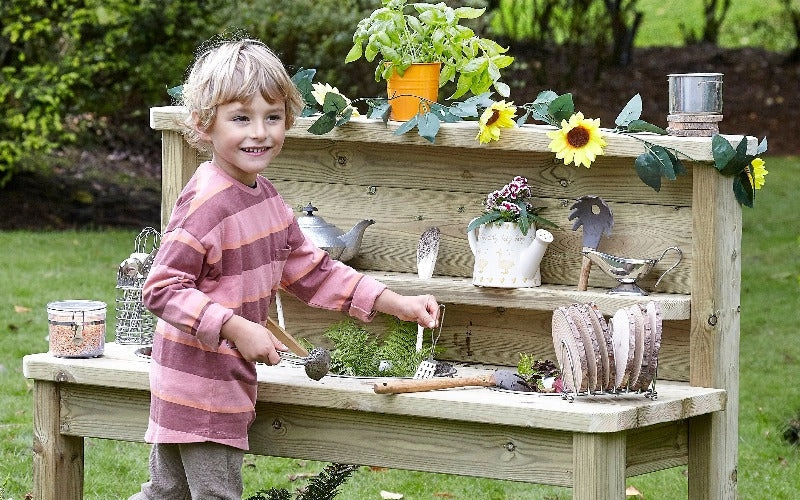
Natural Elements
How Do You Ensure the Safety of Your Role Play Area?
Ensuring the safety of a role-play area in a children’s environment, such as a kindergarten or childcare center, involves several key considerations:
How Do You Ensure the Safety of Your Role Play Area?
Ensuring the safety of a role-play area in a children’s environment, such as a kindergarten or childcare center, involves several key considerations:
Age-Appropriate Design
Safe Materials
Secure Installations
Clear Space
Soft Flooring
Supervision
Regular Maintenance
Emergency Readiness
What Types of Products Are Included in an Outdoor Role Play Area?
Outdoor role play areas for children can be equipped with a variety of products designed to stimulate imagination, encourage social interaction, and provide physical activity. Here are some common types of products that you might include in an outdoor role play area:
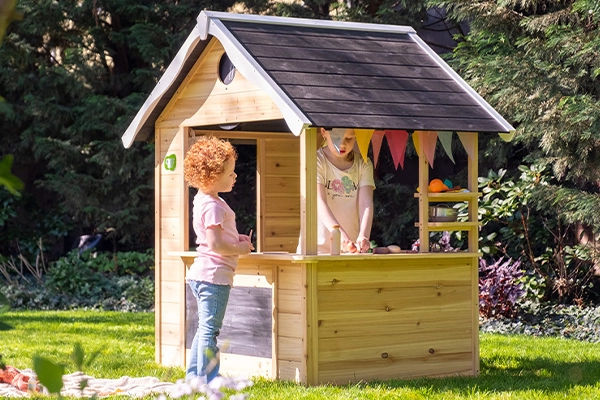
Playhouses and Tents
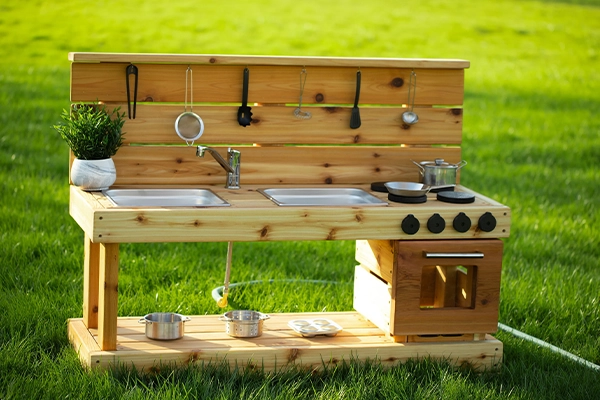
Play Kitchens

Dress-Up Stations

Theater Stages

Sand and Water Play

Gardening Kits

Transport Vehicles

Interactive Game

Picnic Tables

Nature Exploration Kits
How Does Outdoor Role Play Support Social Interaction?
Encouraging Teamwork
Developing Communication Skills
Building Friendships
Learning Social Roles
Promoting Inclusivity
How Do I Maintain My Outdoor Role Play Area?
What Types of Themes Are Available for Outdoor Role Play Areas?
Themed outdoor role-play areas are fantastic for sparking children's imaginations and encouraging creative play. Here are some popular themes that can transform an ordinary play space into an extraordinary adventure zone:
Pirate Adventure
Includes features like a pirate ship, treasure chests, and nautical-themed climbing structures. Children can pretend to sail the seas and search for buried treasure.
Castle and Fairy Tale
Incorporate elements like castles, dragon play sculptures, and enchanted forests. This theme is perfect for reenacting fairy tales and encouraging storytelling.
Space Exploration
Features can include a spaceship structure, alien landscapes, and interactive panels that mimic control panels. This theme encourages interest in science and the universe.
Jungle Safari
Equipped with jungle gyms shaped like trees, animal figures, and bridges. Kids can pretend they're explorers discovering wild animals and exotic plants.
Western Town
Includes a miniature town with elements like a jailhouse, general store, and horse stables. This theme allows children to role-play as cowboys and cowgirls.
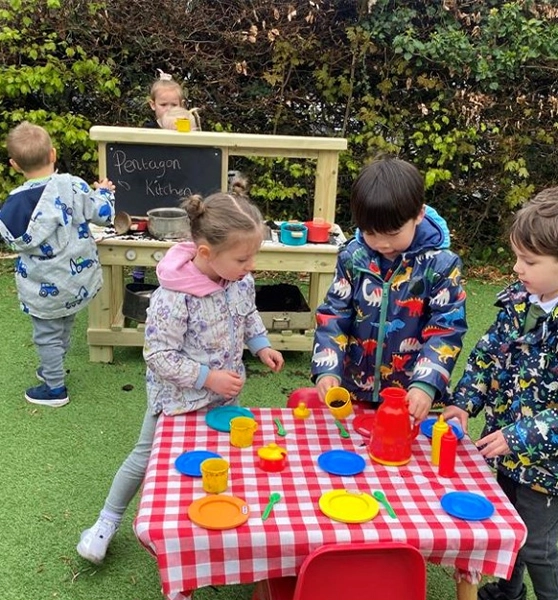
Dinosaur Park
Features dinosaur sculptures, fossil dig sandboxes, and volcanic landscape elements. It’s great for young paleontologists to explore prehistoric times.
Transportation Hub
Incorporates different modes of transport such as trains, planes, and cars. Play structures might include a bus, a small plane cockpit, or a train station.
Farm and Garden
Includes barns, animal figures, and a garden area where children can engage in planting activities. This theme teaches kids about farming and the origins of food.
Underwater Sea Adventure
Features can include submarine play structures, sea creature sculptures, and interactive water play areas. It encourages learning about marine life and ocean ecosystems.
Knight and Princess
Features medieval-themed play structures like towers, fortresses, and interactive elements such as shields and swords for role-playing.
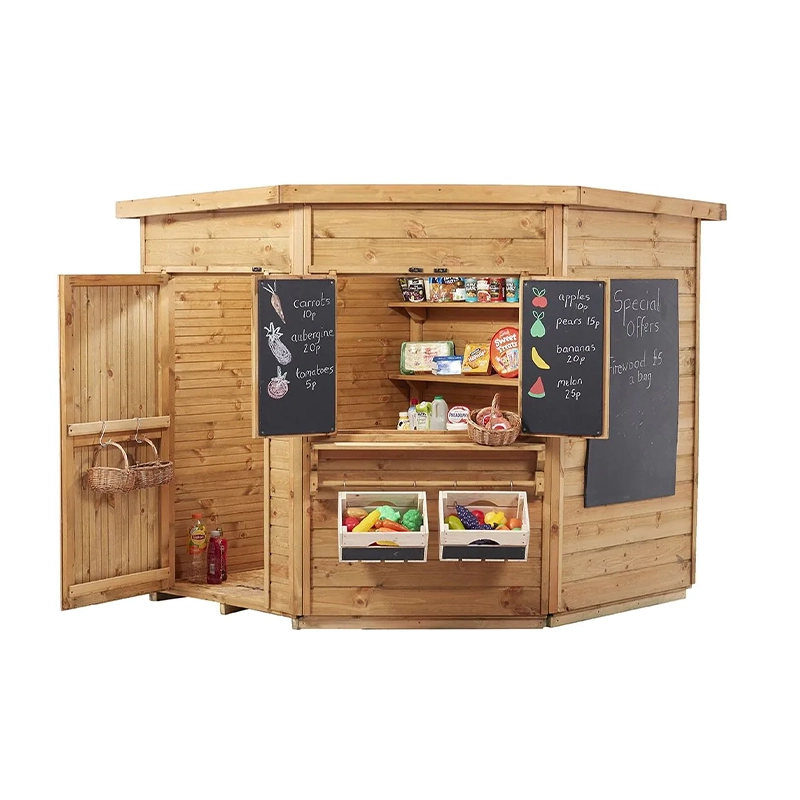
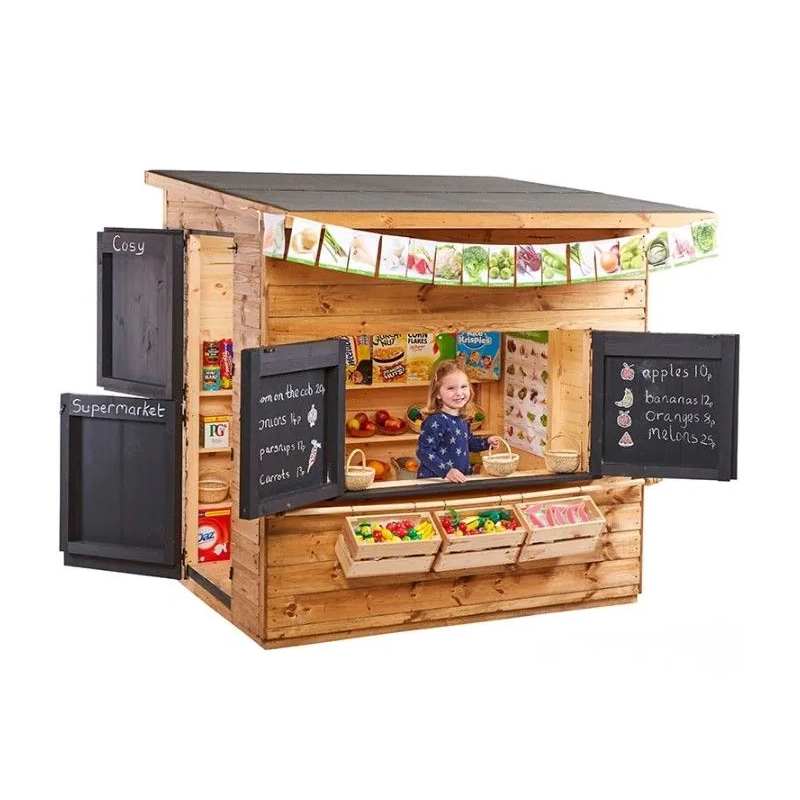
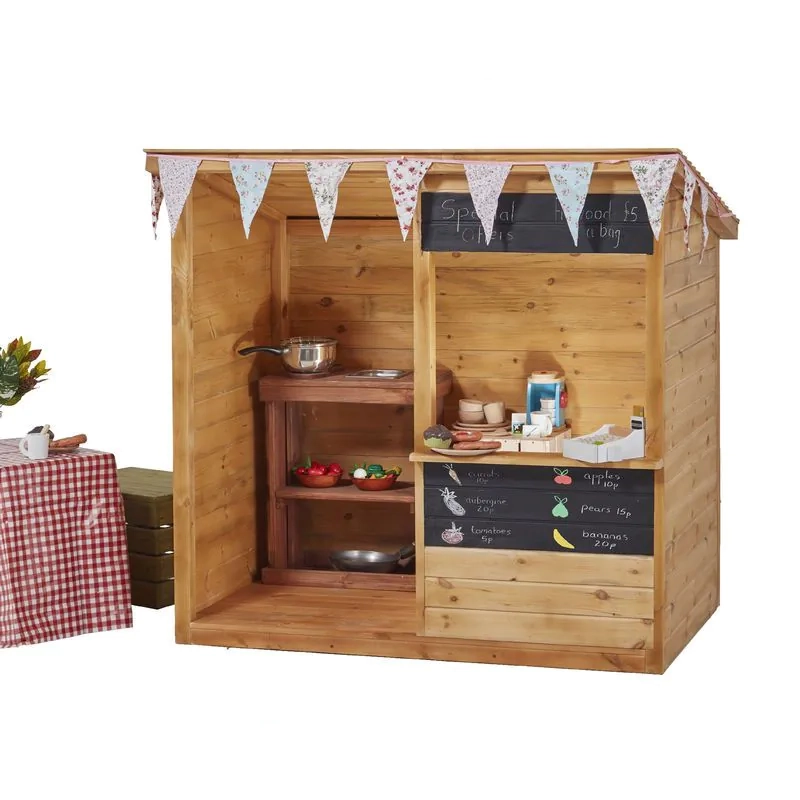
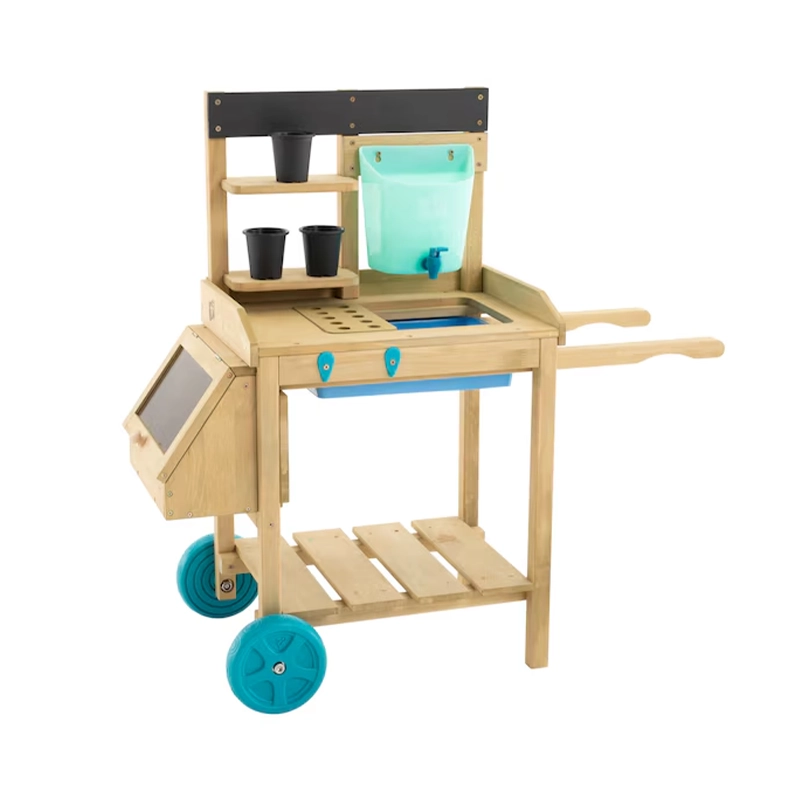
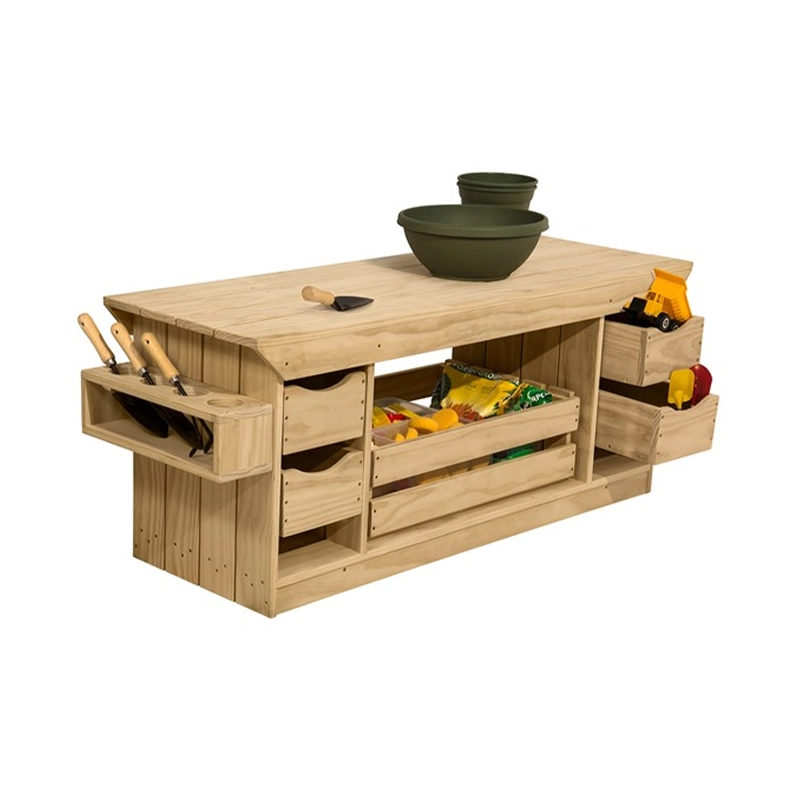
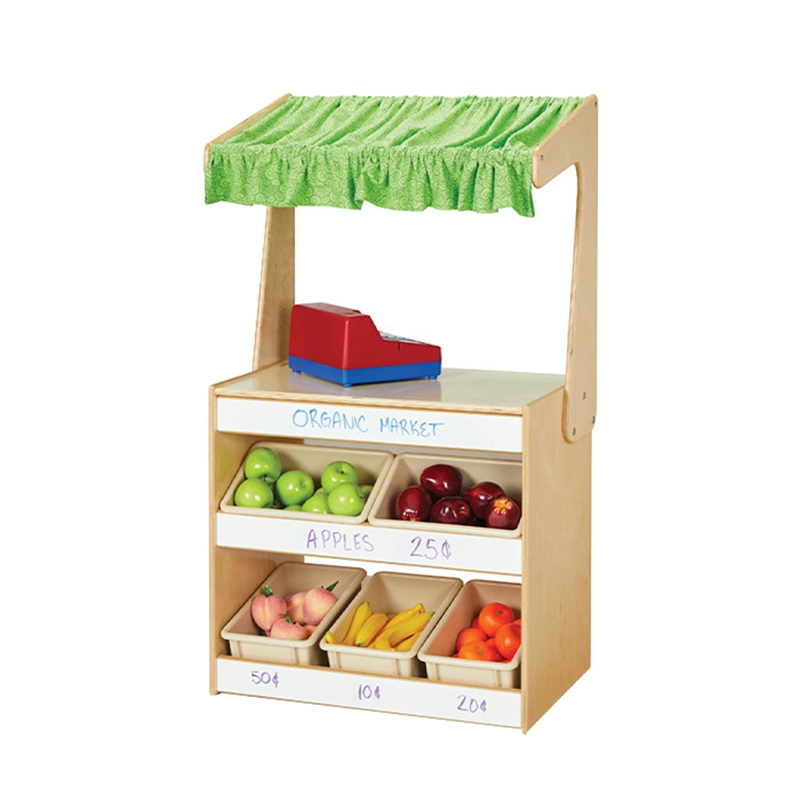
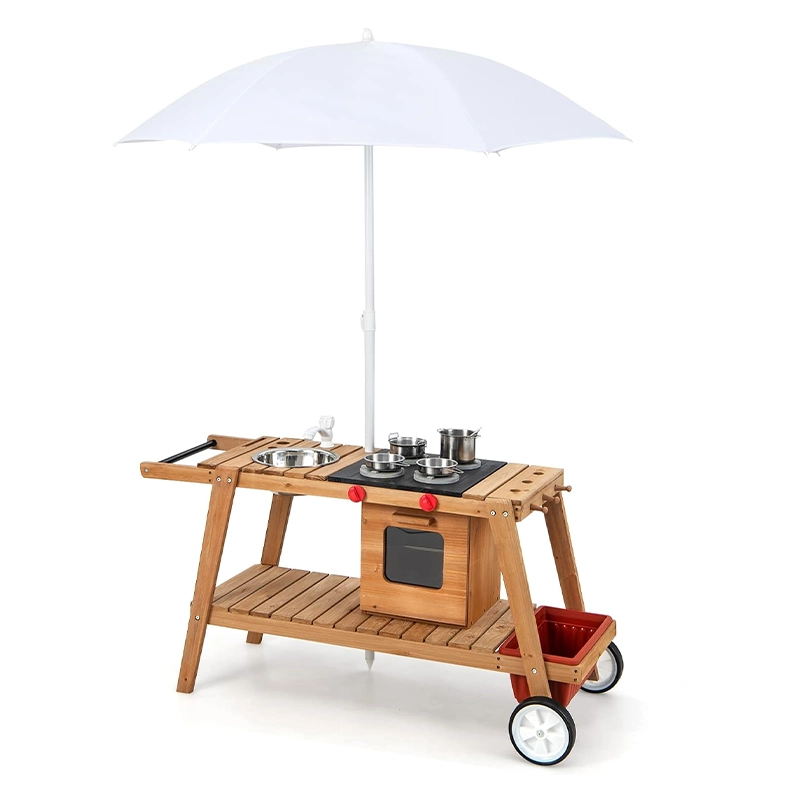
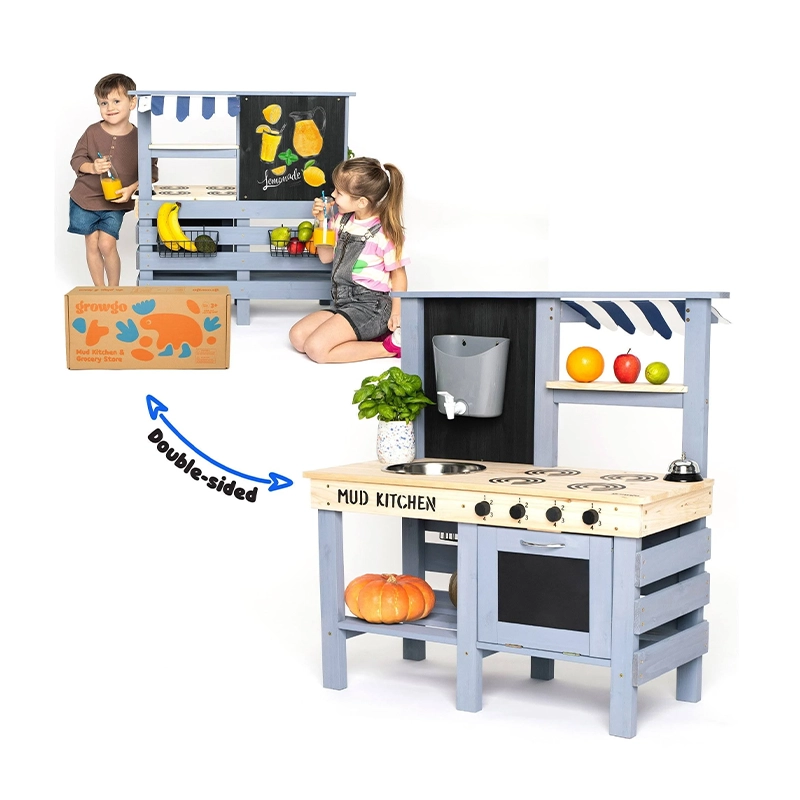
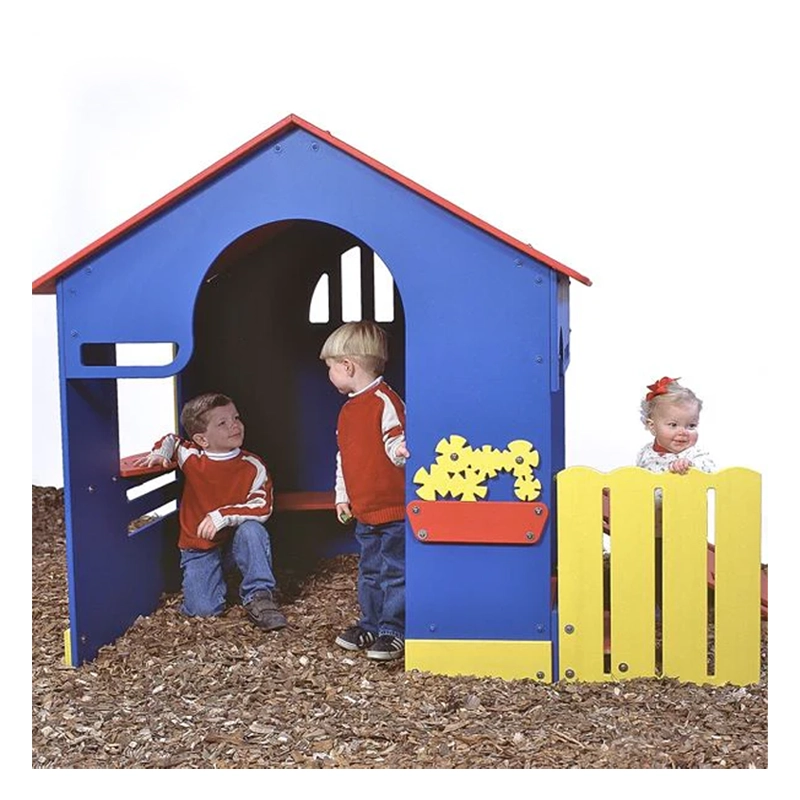
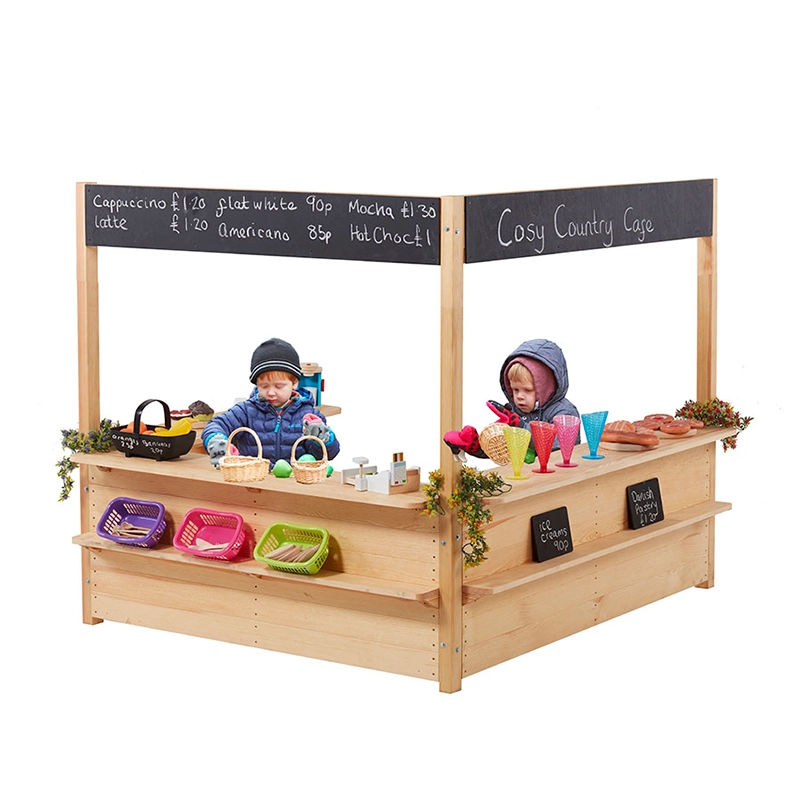
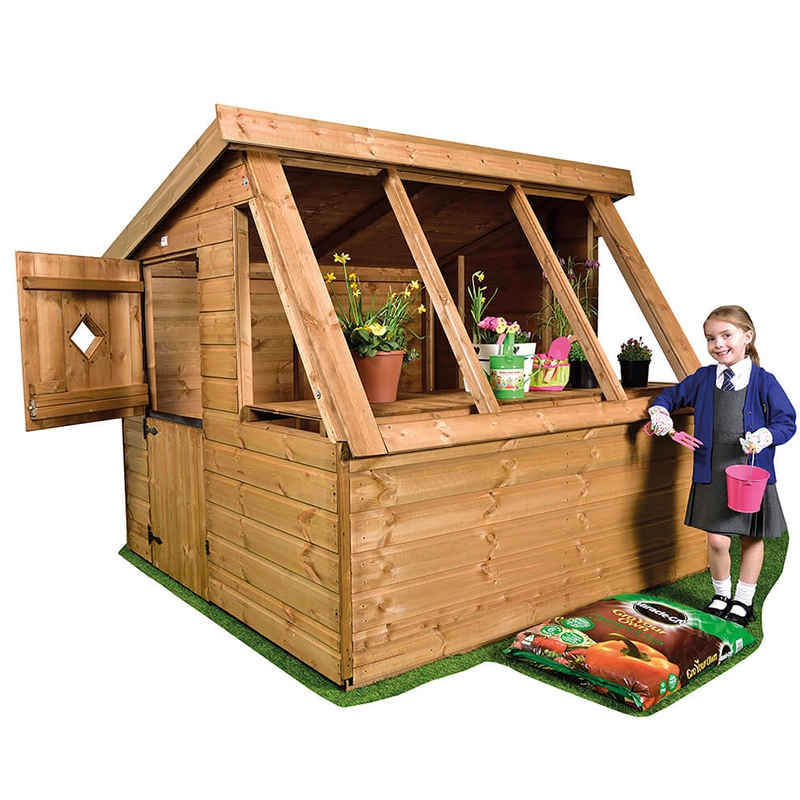
What is the Recommended Age Range for Children Using the Outdoor Role Play Area?
When designing outdoor role-play areas, it's crucial to consider children's specific needs and developmental characteristics at different ages. Here’s a more detailed age segmentation recommendation:
Ages 3-4 (Early Preschool)
- Facilities should be simple and safe, such as small slides, little houses, and sandboxes, and easily operable by young children.
- Themes might include simple animal parks or home settings, stimulating children’s imitation and social skills through everyday life scenarios.
Ages 5-6 (Late Preschool)
- Children in this age group can begin to engage with slightly more complex facilities, like a simulated market, small climbing frames, or more intricate cabins.
- Themes like a magic forest or junior detective encourage the use of more complex imagination and storytelling.
Ages 7-8 (Early Elementary School)
- Suitable for more challenging and interactive facilities, such as themed adventure games, simple mechanical toys, or science exploration stations.
- Themes could include explorers, pirate ships, or science labs, fostering problem-solving abilities and teamwork.
Benefits of Outdoor Role Play Areas
Outdoor role play areas offer numerous benefits for children's development, providing a dynamic environment that enhances learning and growth in various ways. Here are some key benefits:
Role play areas stimulate children's imagination by encouraging them to create stories and roles from their own ideas.
These areas provide a communal space where children interact, communicate, and play together. Through role-playing, children learn to negotiate, cooperate, and resolve conflicts.
Engaging in role play requires children to articulate their thoughts and understand others, which enhances verbal and non-verbal communication skills.
Outdoor role play often involves physical elements like climbing, jumping, and running. This activity helps improve children’s physical health, motor skills, and overall fitness.
Children often encounter scenarios during role play that require problem-solving and adaptive thinking. This helps develop critical thinking skills and cognitive flexibility.
Outdoor settings naturally expose children to the outdoors and the elements, encouraging a connection with nature, which can promote environmental awareness and appreciation.
As children take on various roles, they learn about responsibility. Leading a play scenario or managing a ‘store’ or ‘home’ in their role play can foster leadership skills.
Outdoor environments provide a rich tapestry of sensory experiences, from different textures and sounds to sights and smells. This sensory play is important for brain development and can be particularly beneficial for children with sensory processing issues.
Role play areas can be designed to be accessible to children of all abilities, promoting inclusivity. Adaptive play equipment and thoughtfully designed spaces ensure that every child can participate.
Designing the Perfect Outdoor Role Play Area
Creating an outdoor role play area that is engaging, safe, and beneficial for children involves careful planning and consideration of various factors. Here are some key steps and tips to help you design an adequate outdoor role play space:








